Adult Features—Noses & Ears
If you are a beginner, it is a good idea to practice drawing the facial features separately. This way, you can work out any problems before attempting a finished head drawing. Additionally, always try to work from a live model or clear photographs. This is much easier than trying to draw from your imagination.
The nose is important to the character and personality of a person’s face. Study your subject from different angles, looking for the shapes and planes of the nose. Block in the basic shapes with simple lines, as illustrated below. Then refine the lines into subtle curves, according to the shape of the individual’s nose.
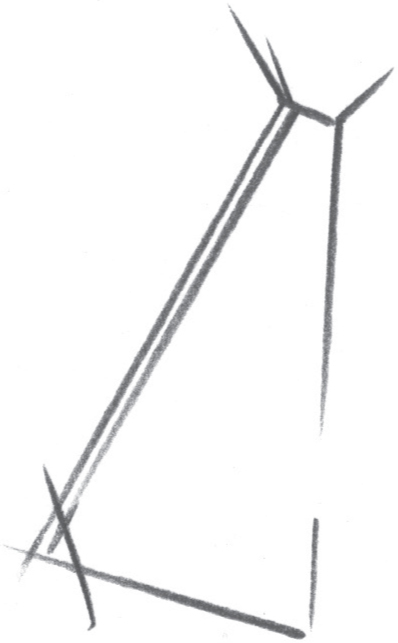
Profile View
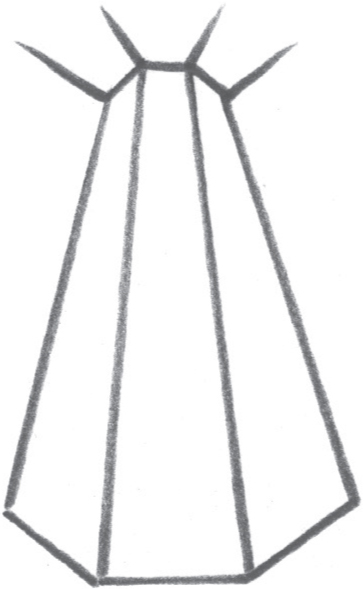
Frontal View
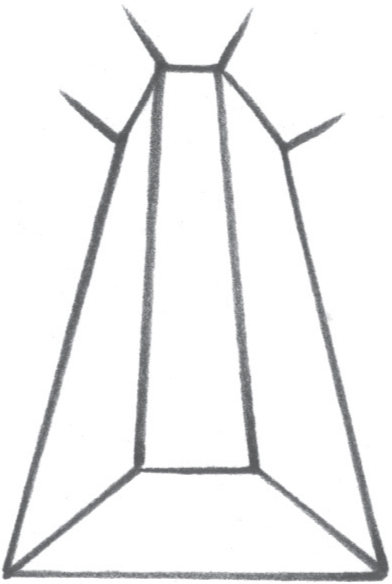
Upward Frontal View
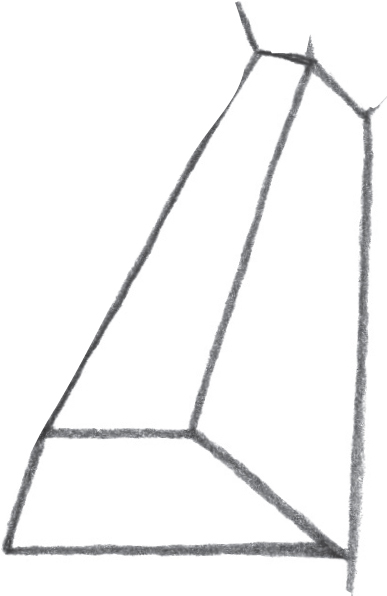
Three-Quarter View
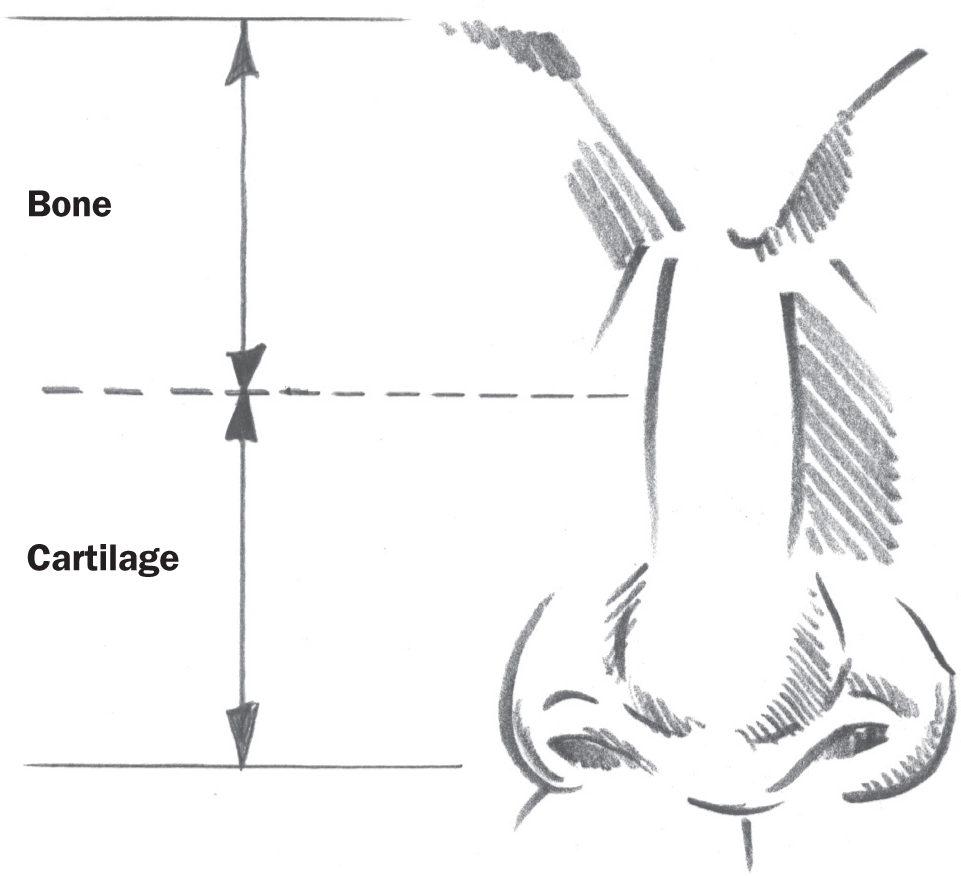
The lower portion of the nose is made of cartilage, while the upper portion is supported by bone. Also, the tip of the nose usually has a slight ball shape.
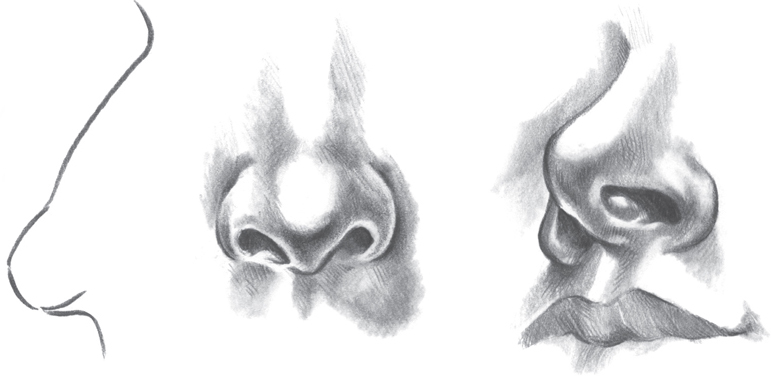
When shading the nose, don’t make the nostrils too dark, or they might draw too much attention. In general, men’s nostrils are angular, while women’s nostrils are more gently curved.

This diagram shows how the nose changes as a person ages. Over the years, the tip begins to sag and turn downward. These details are important for producing realistic works.
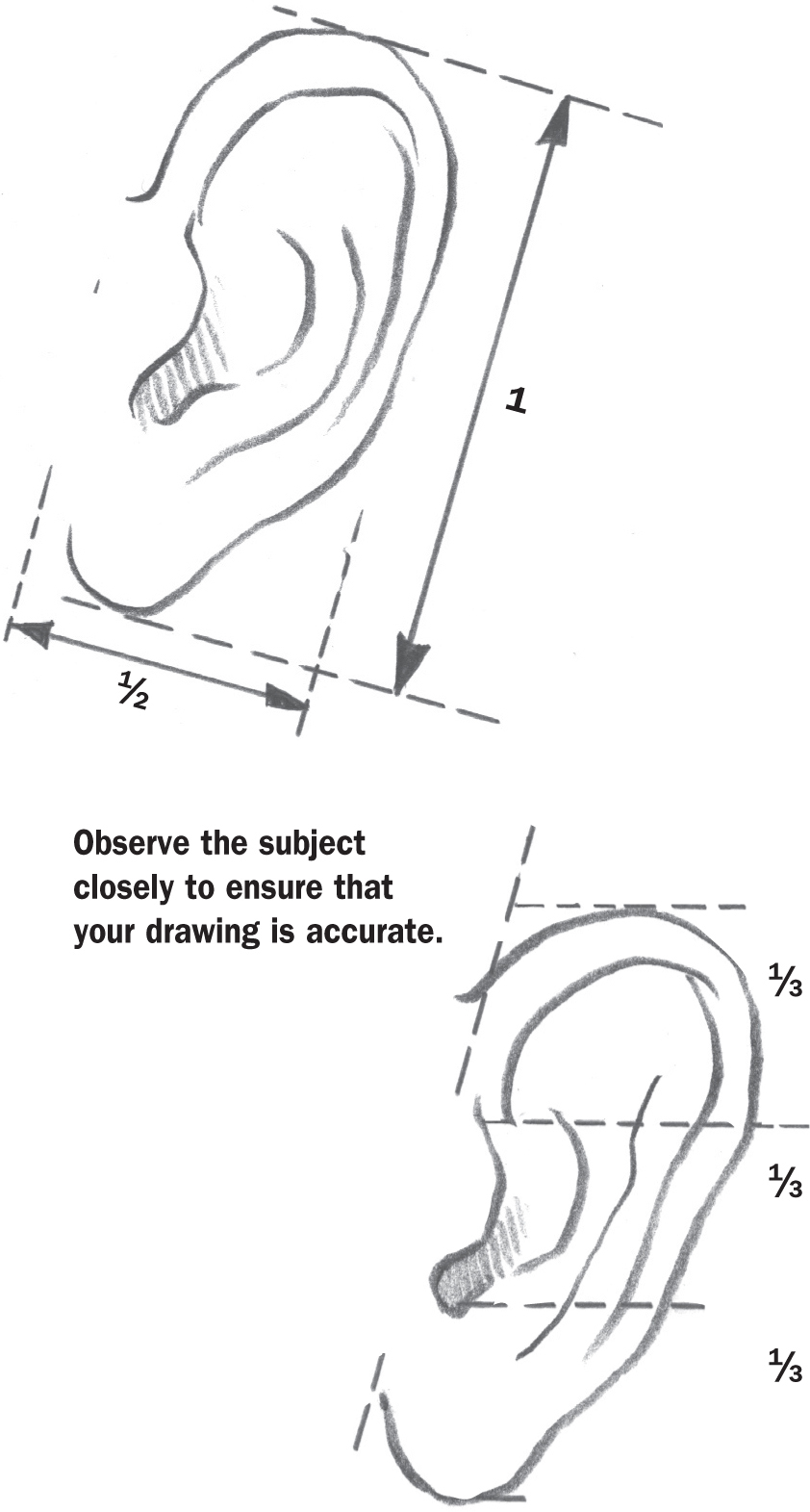
As shown above, the ears usually connect to the head at a slight angle. Notice, also, that the width is generally about one-half the length. The ear can be divided into three sections, which make it easier to see the basic shapes and ridges.
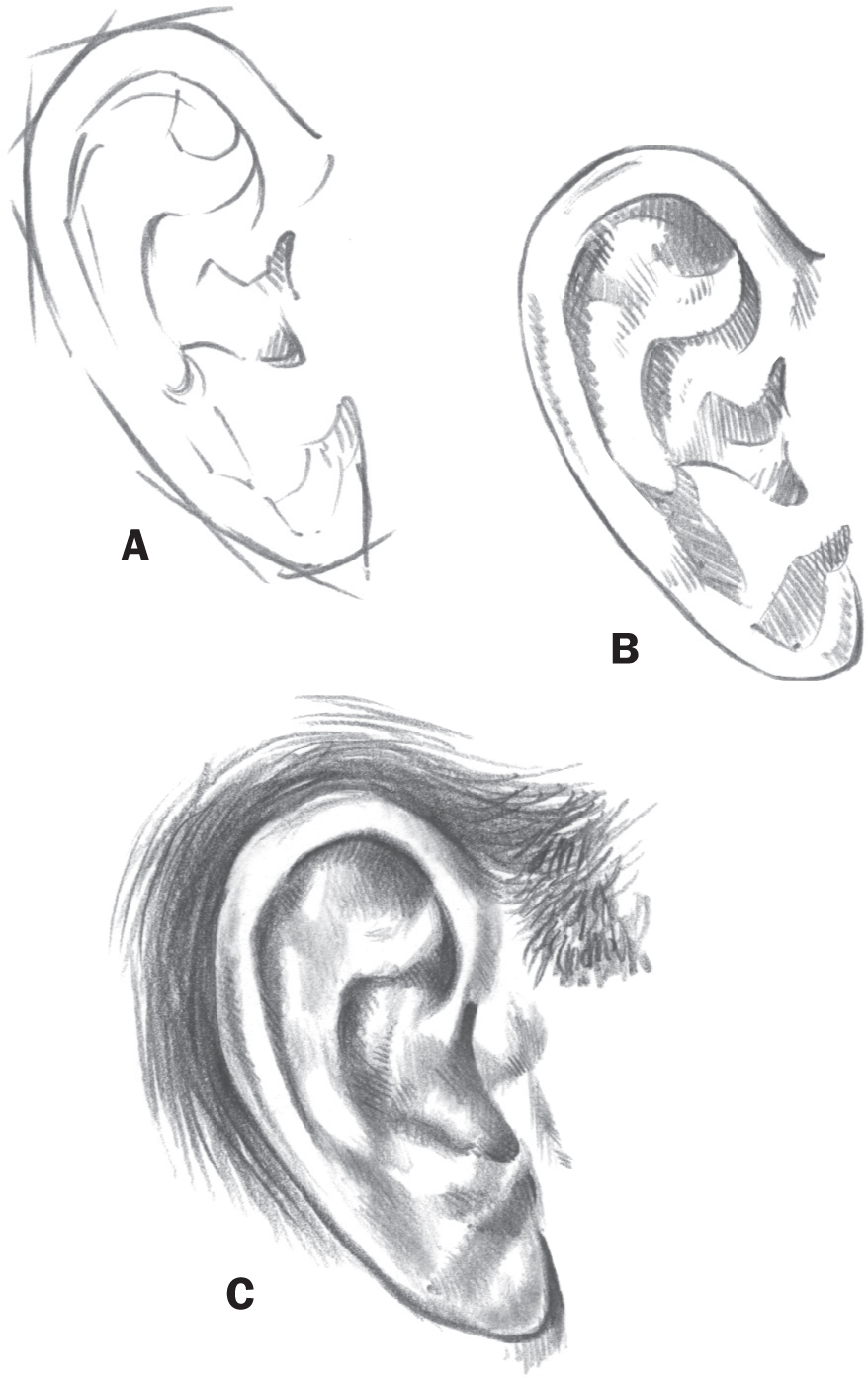
To draw the ear, first block in the general shape; then lightly sketch the ridges, as in step A below. In step B, begin shading within the ridges to develop the form. Finally, add the darkest values. Notice that the white areas are as important as the shadows. The lightest values are called highlights.
